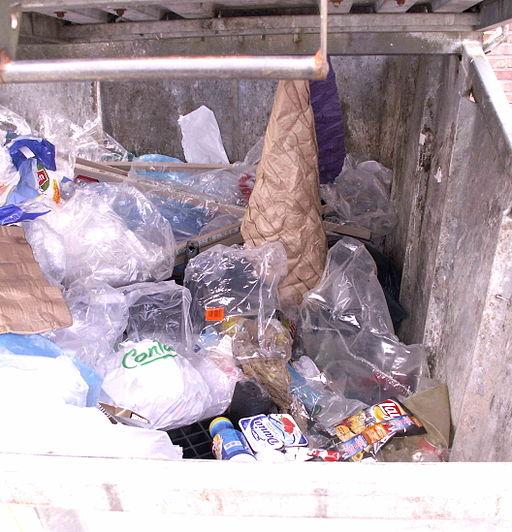The National Resource Defense Council (NRDC) just released a study they conducted on Estimating Quantities and Types of Food Waste at the City Level. Households are responsible for significant portions of food waste, right there with restaurants and supermarkets. Their study consisted of 1,151 households in three cities. Six hundred thirteen homes completed kitchen diaries recording the weight and details of food wasted, 1,357 completed pre and post-study surveys and for 277 lucky households, the NRDC dumpster dived to more accurately assess their wasted food. Two issues keep this from informing policy. First, the definition of edible food is “any substance intended for human consumption; it does not reflect the state of food at any particular point in time … but is used to describe an item that would have been considered edible at some point.” Additionally, there is a category called questionably edible food – “food can be safely eaten, but may not be considered edible by a portion of the population due to culture or preference (e.g., potato peels….)” To their credit, they point out that wasted food is not necessarily rescuable, something that another person might eat if given the opportunity. Second, the study is underpowered, too small to make any meaningful conclusions and that is perhaps why the white paper ends with recommendations for more research rather than new regulations and labels. [1] With those limitations, the survey has some interesting findings to consider.
What we threw away:
- 68% of the food wasted was considered edible (remember that definition) about 6 lbs per household per week
- Among edible foods, milk, bread, coffee, apples, potatoes, and pasta were the tops to be tossed
- Among questionably edible foods households pitched apple skin and cores, potato peels, carrot peels and green broccoli stalks, lettuce outer leaves and cores, cucumber skins
Why did we send it to the waste stream:
- 44% was inedible, 20% moldy or spoiled, 11% of us don’t want leftovers.
- Only 4% based their decision on label dates; whereas 87% in a vote for empiricism used sight, taste, and smell as their determining factor in giving it the heave-ho.
- And for that 4 % who looked at the label date what they were throwing out made a difference, 17% were following the label for eggs, only 2% for meat and fish.
What we did with our extra food:
- Leftovers were big — 74% eaten as another meal, 59% as part of another meal
- 19% were tossed, 5% had too little to save
- 12% went to compost
- 10% to our fur babies (pets)
Our strategies to reduce food waste:
- 58% removed and discarded only the bruised area of fruits and vegetables, 68% prioritized leftovers (as another component or a complete meal), and 63% froze the food before the label date expired.
What about the starving children in ….
- 59% just preferred perfect fruit and vegetables, no blemishes for them
- Guilt about throwing out food was reduced for 45% if it had been in the refrigerator for a long time; 58% felt less guilty because it was composted.
- 63% believe it is important that we clean our plate. (My mother and countless others would be so proud)
Food has a tremendous social component. Among the other findings:
- 74% of households had a person skilled enough to cook. 28% of those cooks made too much food. (See plate cleaning above)
- 61% would like more time to prepare and cook meals
- 85% felt having regular household/family meals was important and found making food for friends and family made them feel good (This will be news to most of the food industry that bemoans the death of home cooking other than that done in a microwave)
- 76% of households felt they threw away less than others, 21% knew they threw out more with only 16% feeling they were average (Signaling to others that you are socially responsible remains essential)
- 72% were aware of food wasting as a social problem because they learned it from social media, old fashioned world of mouth and TV and documentaries. So much for education by government, schools or even the NRDC
[1] These real problems with the study did not prevent headlines from the usual suspects that included “Reports Reveal Two-Thirds of Food Waste is Edible.” To be correct and based on the NRDC study the headline should read “Reports Reveal Two-Thirds of Food Waste was Edible Previously.” Not as catchy, but more accurate.




